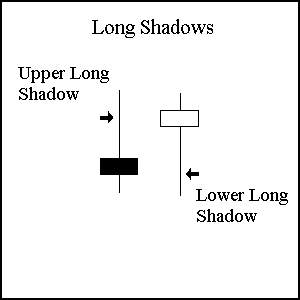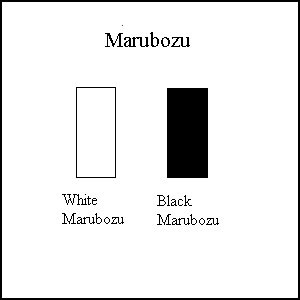The latest ranking of the world's richest men in 2008 saw Bill Gates dethroned from the top position after occupying the spot for more than 10 years in a row, thanks to an unsolicited bid for Yahoo! in the recent run.
His position now is taken over by his long time friend, Warren Buffett. Buffett's current position may not long last though, as he has promised to contribute a big chunk of his fortune to charity soon.
Four of the wealthiest people are Indian citizens, with two of them siblings. As among the world's strongest economy, the Japanese, Chinese and British do not have representative in the top 10. The ranking is as published by Forbes on February 2008.
1. Warren Buffett (US). $62 billion
For many years, Warren Buffett has been overshadowed by Bill Gates who finally dropped his place to third this year. Buffett is often noted with his uncanny ability and talent to identify company stocks that are deemed to soar in the market. Being the richest person does not change his frugal lifestyle as he still lives in the $30,000 house he bought in the 50s, which now worth merely about $700,000.
2. Carlos Slim Helu ( Mexico ). $60 billion
Carlos Slim Helu is a Mexican tycoon with business interest in telecommunication industry and sector, and is the man behind America Movil, the 5th largest mobile network company in the world, together with a few other mobile operators such as Telmex (Mexican Telecom) and Telnor (Northwest Telephones). Carlos belongs to a classic story of a poor immigrant moving from Lebanon at the age of 15, whose family made fortune in a foreign soil.
3. Bill Gates (US). $58 billion
Despite no longer the wealthiest person, Bill Gates, or William Henry Gates III, still retired a happy man this year, even though his passing over to successor Steve Balmer has been a day full of tears. The Microsoft he founded more than 30 years ago has long been benchmarked as the turning point of technology and life, and with this, he surely does not regret dropping out from Harvard University and getting the scolding from his parents, a lawyer and a businesswoman.
4. Lakshmi Mittal ( India ). $45 billion
Lakshmi Mittal was born and raised in India , but created most of his fortune from his London base. The company he inherits, ArcelorMittal, the world's largest steel company, accounts for about 10% of the world's steel production. Mittal is also the richest resident in Europe today. He is now living in Kensington Palace Gardens , the property he bought from Formula One honcho Bernie Ecclestone for about $130 million.
5. Mukesh Ambani ( India ). $43 billion
Receiving an MBA from prestigious Stanford University and being valued at $43 billion make Mukesh Ambani both rich and smart. Rumor has it that he never completed his Stanford studies but he would care little about it now. Mukesh now heads India 's most valuable company, Reliance Industries, founded by his late father, and is also a Fortune 500 company. He is also the first ever Indian citizen to have reached a trillion mark in terms of net worth (In Indian currency of course).
6. Anil Ambani ( India ). $42 billion
The younger brother of Mukesh. If Mukesh went to Stanford, Anil did not want to be overshadowed and pursued his MBA in Wharton Business school. And the rivalry does not seem to end as both of them are now battling each other in court over a business deal. It is true they say fortune can break a family apart. Anil made sudden entry to the top ten list in 2008 after almost doubling his wealth within a year period. Married to a Bollywood actress Tina Munim.
7. Ingvar Kamprad ( Sweden ). $31 billion
Ingvar Kamprad is most likely less popular than the company he founded, IKEA. Born dyslexic did not stop Kampard from bringing up one of the most successful companies in the world. He once admitted that the Swedish-sounding names of the IKEA furniture were chosen because of his difficulty remembering stock numbers. Interestingly enough, despite his wealth, Kamprad still keeps the habit of eating in cheap restaurants, flying economy class and avoiding himself from wearing the suit.
8. KP Singh ( India ). $30 billion
The property businessman was not anywhere in the top 10 list last year but the successful listing of his company, DLF Limited tripled his fortune and jumped him to 8th place this year. The company now is the largest estate developer in India . Singh graduated in engineering, before recruited by the Indian Army soon after his graduation, and later turned to corporate world. Now practically retired, the running of the company is left to his children..
9. Oleg Deripaska ( Russia ). $28 billion
If for the past few years it is always Roman Abramovich who always made headlines as both Chelsea owner and Russia 's richest man, it's now Oled Deripaska's turn. Oleg is the Chairman of RUSAL, the world's largest aluminium company, which employs a massive 100,000 people across a number of countries and continents. Like Roman, Oleg also has a home based in London , and as a matter of fact, was once rumored to have interest in taking over Chelsea 's great rival, Arsenal.
10. Karl Albrecht ( Germany ). $27 billion
With little formal education, the Germany 's richest man started a small grocery store with his mother and brother, Aldi, after the end of the World War II, which soon grew into a large discount supermarket. It did not stop there as the family opened up more and more supermarket and today the company can be proud with themselves with over 8,000 stores worldwide. Albrecht is a man very much elusive of publicity. His hobby? Raising orchards.

 Ideally, but not necessarily, the open and close should be equal. While a doji with an equal open and close would be considered more robust, it is more important to capture the essence of the candlestick. Doji convey a sense of indecision or tug-of-war between buyers and sellers. Prices move above and below the opening level during the session, but close at or near the opening level. The result is a standoff. Neither bulls nor bears were able to gain control and a turning point could be developing.
Ideally, but not necessarily, the open and close should be equal. While a doji with an equal open and close would be considered more robust, it is more important to capture the essence of the candlestick. Doji convey a sense of indecision or tug-of-war between buyers and sellers. Prices move above and below the opening level during the session, but close at or near the opening level. The result is a standoff. Neither bulls nor bears were able to gain control and a turning point could be developing.
 Ideally, but not necessarily, the open and close should be equal. While a doji with an equal open and close would be considered more robust, it is more important to capture the essence of the candlestick. Doji convey a sense of indecision or tug-of-war between buyers and sellers. Prices move above and below the opening level during the session, but close at or near the opening level. The result is a standoff. Neither bulls nor bears were able to gain control and a turning point could be developing.
Ideally, but not necessarily, the open and close should be equal. While a doji with an equal open and close would be considered more robust, it is more important to capture the essence of the candlestick. Doji convey a sense of indecision or tug-of-war between buyers and sellers. Prices move above and below the opening level during the session, but close at or near the opening level. The result is a standoff. Neither bulls nor bears were able to gain control and a turning point could be developing.

 Long Upper Shadow and Short Lower Shadow :-
Long Upper Shadow and Short Lower Shadow :-
